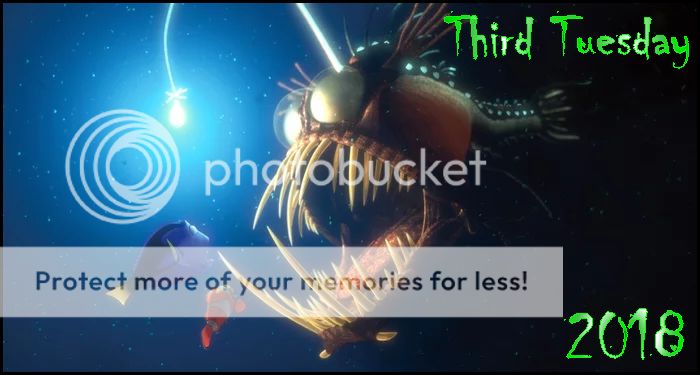A Geocaching social event.
PLEASE LOG YOUR "WILL ATTEND"

|
Giant Isopod
|

|
|
| Scientific classification |
| Kingdom: |
Animalia |
| Clade: |
Euarthropoda |
| Subphylum: |
Crustacea |
| Class: |
Malacostraca |
| Order: |
Isopoda |
| Family: |
Cirolanidae |
| Genus: |
Bathynomus |
| Species: |
(several) |
|
A giant isopod is any of the almost 20 species of large isopods (crustaceans distantly related to shrimp and crabs, which are decapods) in the genus Bathynomus. They are abundant in cold, deep waters of the Atlantic, Pacific and Indian Oceans. Bathynomus giganteus, the species upon which the generitype is based, is often considered the largest isopod in the world, though other comparably poorly known species of Bathynomus may reach a similar size (e.g., B. kensleyi). The giant isopods are noted for their resemblance to the much smaller common woodlouse (pill bug), to which they are related.
Giant isopods are a good example of deep-sea gigantism, as they are far larger than the "typical" isopods that are up to 5 centimetres (2.0 in). Bathynomus can be divided into "giant" species where the adults generally are between 8 and 15 centimetres (3.1 and 5.9 in) long and "supergiant" species where the adults generally are between 17 and 50 centimetres (6.7 and 19.7 in). One of the "supergiants", B. giganteus, reaches an average length between 19 and 36 centimetres (7.5 and 14.2 in), with a maximum weight and length of approximately 1.7 kilograms (3.7 lb) and 76 centimetres (30 in) respectively.
Their morphology resembles that of their terrestrial cousin, the woodlouse: their bodies are dorso-ventrally compressed, protected by a rigid, calcareous exoskeleton composed of overlapping segments. Like some woodlice, they also possess the ability to curl up into a "ball", where only the tough shell is exposed. This provides protection from predators trying to strike at the more vulnerable underside. The first shell segment is fused to the head; the most posterior segments are often fused as well, forming a "caudal shield" over the shortened abdomen. The large eyes are compound with nearly 4,000 facets, sessile, and spaced far apart on the head. There are two pairs of antennae. The uniramous thoracic legs or pereiopods are arranged in seven pairs, the first of which are modified into maxillipeds to manipulate and bring food to the four sets of jaws. The abdomen has five segments called pleonites each with a pair of biramous pleopods; these are modified into swimming legs and rami, flat respiratory structures acting as gills. The isopods are a pale lilac or pinkish in colour.
|
The Place:
CAVA
The Date:
Tuesday, February 20, 2018
The Time:
6:00pm to 9:00pm
Come out for an evening of tasty foods and stories. Everyone is welcome!
Please note: If you do not think you will arrive until after 8:00pm please post this with your attend log. Sometimes the group breaks up early, if we know you are coming late we will be sure to wait for you. Thanks!
A note about trackables: Feel free to bring them, just please don't leave them unattended on the tables, they can be accidentally lost when the tables are cleaned.
Please help by posting your "Will Attend" as early as possible as it will allow me to give the restaurant an idea of how many to expect. Thanks!
Parking can be tricky, please note the Additional Waypoint for the Garage Entrance.